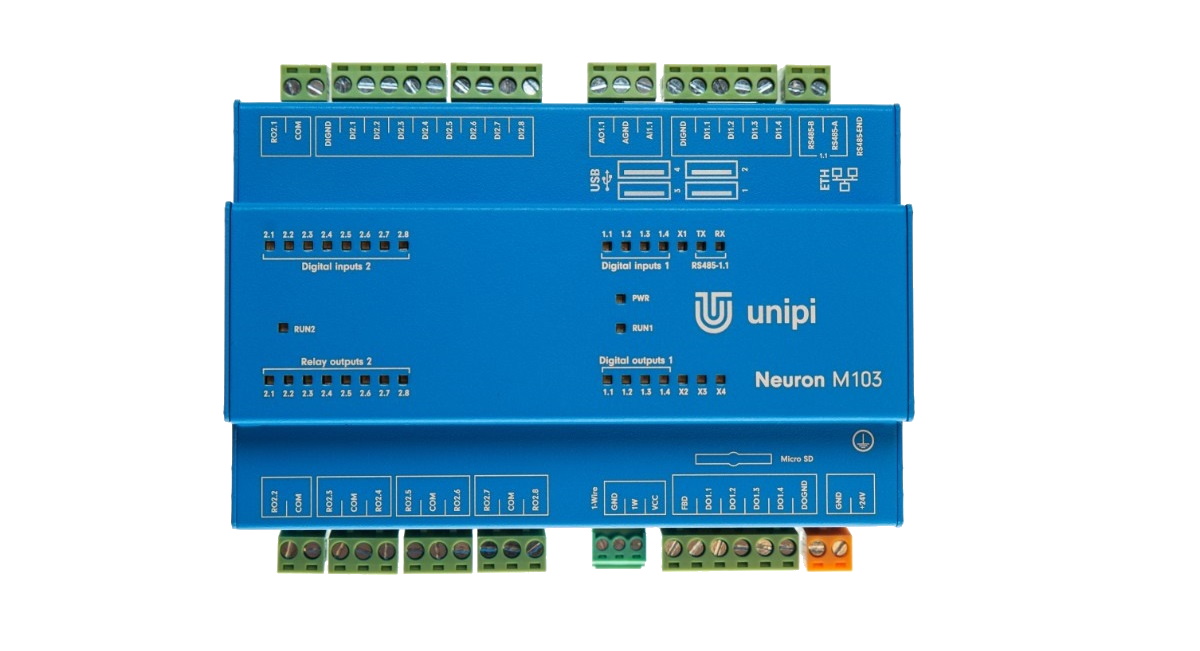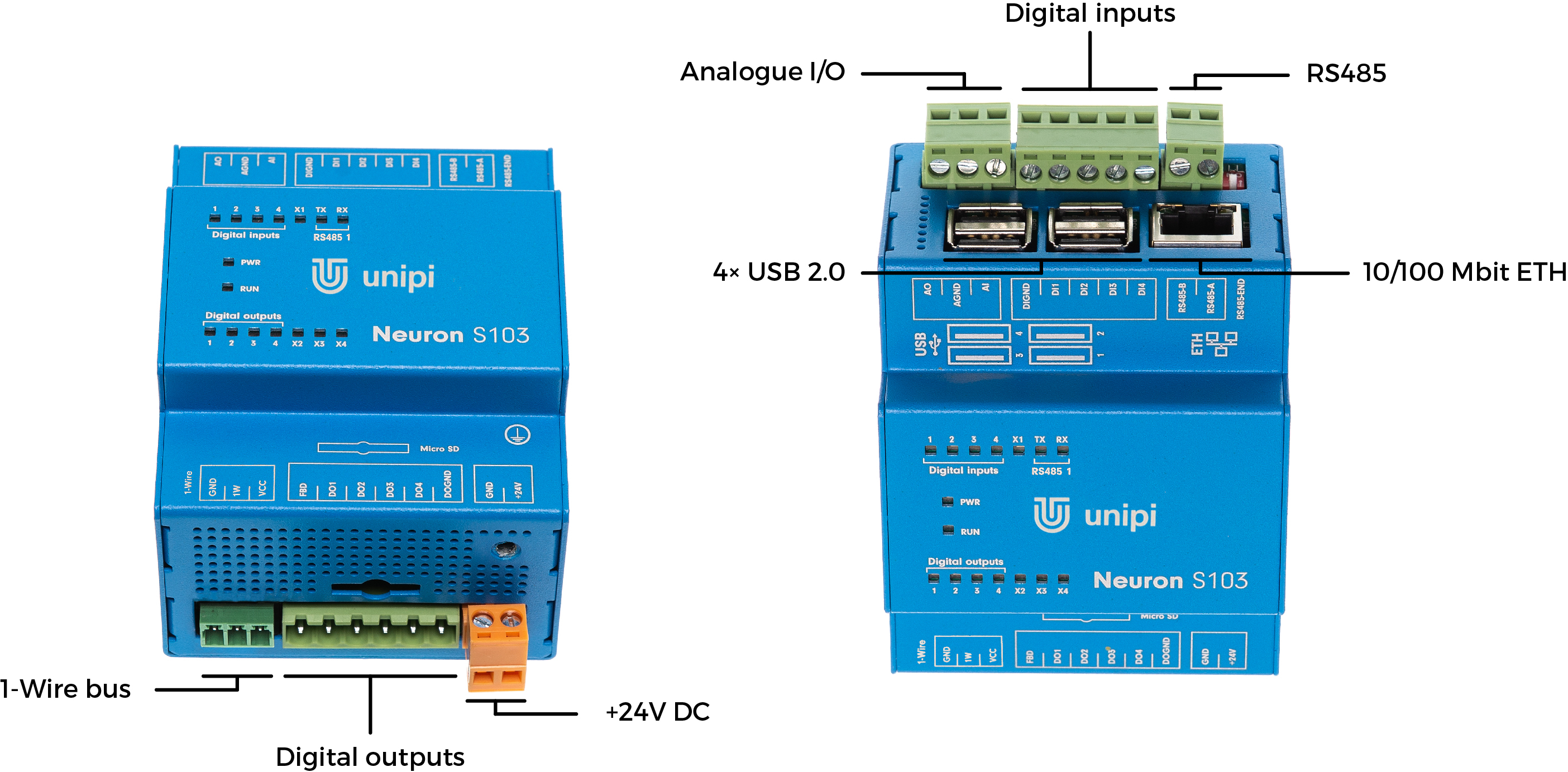This is an old revision of the document!
Unipi Neuron
Unipi Neuron is a modular programmable logic controller (PLC) product line designed for control, regulation and monitoring of smart building systems, HVAC (Heating, Ventilation, Air Conditioning) systems and both home and industrial automation systems. Thanks to its modular architecture and compact design, the Neuron represents a highly flexible and affordable solution for the quickly expanding field of smart technology. Customers can also utilize the Neuron for smart energy management to achieve better energy efficiency and reduce expenses.
Hardware description
Each Neuron model is divided into one to three input-output (I/O) groups depending on the model, each containing a group of input, output and/or communication modules. The Neuron can contain 1 (S-series), 2 (M-series) or 3 (L-series) I/O groups.
Each I/O circuit board is controlled by its STM32 processor, which controls inputs and outputs and communicates with the central processing unit (CPU). Processors are using custom firmware containing not only basic I/O functions, but also additional functions and features.
All components are encased in a durable metal case made from eloxed aluminium with IP20 degree of protection against external hazards. The case can be customized - for more info, see the OEM solutions page
CPU
All Neuron models are using the Raspberry Pi Model B as its central processing unit. Each I/O group is connected to the CPU and a central communication channel for all group processors. There is no communication between I/O groups. Each processor can also function independently on the CPU, allowing users to retain basic control of I/O modules in the event of CPU malfunction or software issue.
Inputs & Outputs
Depending on the model, the Neuron product line can offer up to:
- up to 64 digital inputs
- up to 4 digital outputs
- up to 56 relay outputs
- up to 9 analog inputs
- up to 9 analog outputs
- up to 3 RS485 universal bus ports
- various combinations of the above-mentioned
Additional functionality
Along with basic I/O features it offers additional unique features. This functionality is implemented in the internal microcontroller so it does not not rely on the main compute module or the runnin applitaction.
Direct Switch
This function connects a digital input with digital output or relay output. The function is independent on the master PLC and is suitable for time-critical applications (ie. lighting control). The function can be configured to one of three available modes:
- Copy: output is switched by an active input
- Invert: output is switched by an inactive input
- Toggle: output is switched by any change on the input
Default configuration
This function allows the user to store the default configuration of the module's inputs, outputs and communication lines into its internal memory. If the module is rebooted, the default configuration is loaded automatically.
Master Watchdog
The function monitors the communication between the module and the controller. If the communication is interrupted (eg. no response from the controller is detected within a defined time frame), the module automatically reboots making it to load the Default configuration.
Communication interfaces
By default, all Neuron models feature up to three RS485 serial lines for connecting of external devices or extension modules (i.e. Extensions). One line can communicate with up to 32 devices, using the Modbus RTU protocol.
Each Neuron also features a single 1-Wire bus for the passive reading of data from corresponding 1-Wire sensors (humidity sensors, temperature sensors etc.). One bus can receive data from up to 15 sensors at once (provided a suitable 1-Wire hub is used).
As the Unipi Neuron product line is based on the Raspberry Pi, all Neuron controllers feature up to 4 USB ports. These ports can be used for connecting various USB convertors, external memory drives etc. We do not recommend using them to power external devices.


